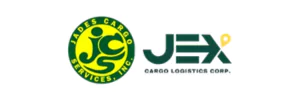Jades Cargo Services Tracking

Enter your Tracking Number and click the button
Track your packages with only one click. To trace your package, enter its Jades Cargo Services Tracking number.
Contact Information
| Phone Number | (02)8256-2556 / (02)8533-4755 / (0923) 7008717 |
| Email Address | [email protected] |
| Company Location | 350 Nepa St., Balut, Tondo, Manila |
| Main Link | https://jadescargo.ph/ |
| Track Article | Atlas Shippers Cargo Tracking |
Jades Cargo Services Inc
The organization, which was founded in 1988, helps with logistics coordination by combining data from several freight companies. It gathers cargo status, customs data, and route information into unified digital platforms. These tools are used by businesses to handle cross-border imports, assess performance, and obtain cargo updates. Tracking systems provide real-time location information by connecting to air, land, and sea transit points.
To obtain timetables, route modifications, and anticipated arrival times, customers input reference numbers. The business connects Philippine locations including Cebu, Davao, and Manila with Chinese suppliers. Users navigate import processes’ documentation and compliance protocols through integration. Without relying on the operator, tools show delivery milestones, transportation stops, and location scans. For users handling inter-island or offshore cargo, this lowers uncertainty and enhances business planning.
Companies use the platforms to keep an eye on a lot of freight traveling in consolidated cargo or container trucks. Real-time visibility into movement patterns and route performance is made possible via customizable dashboards. The technologies streamline disparate transport data by aligning third-party logistical data. This enables users to estimate reception windows, evaluate freight costs, and identify delays.
By reflecting data from carriers operating throughout the Philippine archipelago, each update helps end users avoid manual coordination. Both bulk and high-priority freight are managed by users through uniform interfaces across sea and air channels. Instead of managing actual goods transportation, these services maximize supply chain visibility. To regulate flow and time, users engage with information systems rather than fleet or employees.